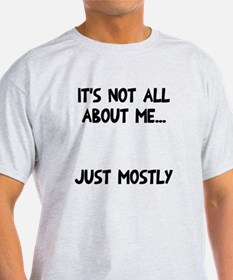Consequence thinking - effective but short sighted?
 Friday, July 21, 2017 at 05:40AM
Friday, July 21, 2017 at 05:40AM Our safety messaging (in many countries) has to date almost exclusively modeled what Harvard researchers call “consequence thinking” (consequences to self) rather than moral thinking (consequences for known others) and ethical thinking (consequences for unknown others, e.g., one’s community or planet). To be crystal clear, let’s call it “future consequence thinking”: with messages like, what you share online will be there forever, don’t post that because it could hurt your future prospects, turn it off and go outside or you’ll get fat, anti-social, or socially excluded, etc. Do we think about the laser focus on consequences to self and whether that supports social emotional health, deep connection with others and civic engagement? Do we think – and help our children think – about how their activities in this moment are providing or supporting meaningful connection and collaboration right now? Anne Collier 6 takeaways from 20 years of Net Safety: Part 2 July 19, 2017
Is WIIFM the basis of your digital citizenship teaching strategy? Collier's observation above made me think hard about how I get others to take Internet safe and ethical use seriously. And yes, it's been mostly about how safe and ethical use benefits the user - consequence thinking as Collier puts it. Do we owe it to those we teach to include moral and ethical thinking as well - how our actions might impact others? Do we have faith that those we teach care about not just themselves, but others as well. It would take a true misanthrope to do otherwise. And while experiences sometime turns teachers into misanthropes, misanthropes don't make very good or effective teachers.
 A second reaction I had to Collier's divisions of "safety messaging" made me think about my decisions as a educational technology administrator. When asked to make a decision, do I choose:
A second reaction I had to Collier's divisions of "safety messaging" made me think about my decisions as a educational technology administrator. When asked to make a decision, do I choose:
- What most benefits me? (does not cause controversy, stays in budget, does not cause disruption, leads to job security)
- What most benefits those in my department and those I interact with often? (give others what they ask for, keeps work loads managable, suit personal interests)
- What benefits the students and communities, local and global, I serve? (creates needed positive change, helps empower students and teach critical skills, builds equity)
It's a happy day when I can make a choice that meets all three criteria. But it doesn't happen very often.
In the column linked above, WIIFM?, I observed:
One most excellent thing makes the job of the technology advocate easier. Teachers respond not just to a WIIFM approach. In fact, the WIIFMS argument is often far more persuasive: What’s In It For My Students? (We are still the most altruistic profession on the face of the earth, regardless of the political rhetoric.)
I still believe that is true.
Stop next time you make a choice and ask if you are making it based on consequence, morality, or ethics. You need to answer to no one but yourself.









Reader Comments (2)
As a miner for many years, I've always witnessed consequence thinking taught as consequences to yourself, others, your equipment, your operating permit, the business, the industry, the community, the family you leave behind to grieve; the consequences of the entire process. You are considered an agent of the company and an ambassador.
Nothing so serious is worth taking a short cut. Consequence thinking was taught as a global concept because too many people looked out for themselves, never considered the outcomes of their actions, and only considered when Friday would come.
We were taught we are responsible for our heath and safety, the health and safety of those around us. We were responsible for achieving production safely, we were responsible for environmental compliance, responsible for impacts to our neighbors and community.
We felt empowered to always stop work and question if you see something that others are doing that you suspect may not be safe, even if it's the CEO.
Our health, safety and environmental systems were summed up as prevention, improvement and compliance were key to our policies. The first thing we learned was that we don't just look out for ourselves.
I hope that is how other organizations begin to teach the idea.
Hi Mark,
Thanks for this comment. It's interesting to read how ethical applications are view in other fields. As a lifelong educator, I am don't have experience in fields like mining, manufacturing, etc. but it is good to know safety is viewed as an ethical issue in the "real" world.
All the very best,
Doug